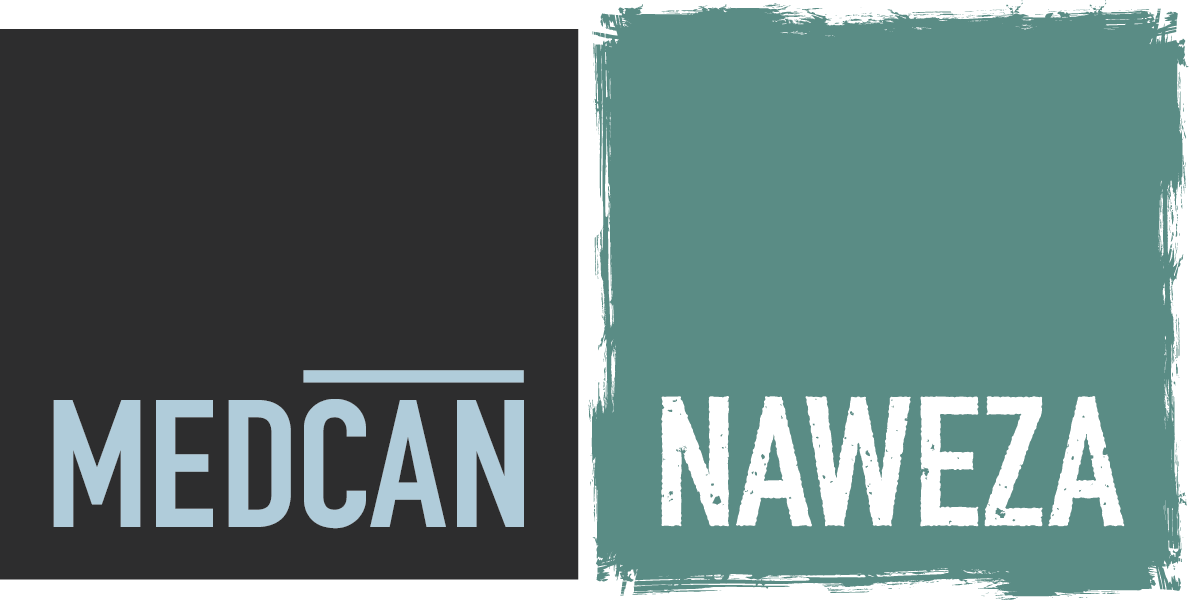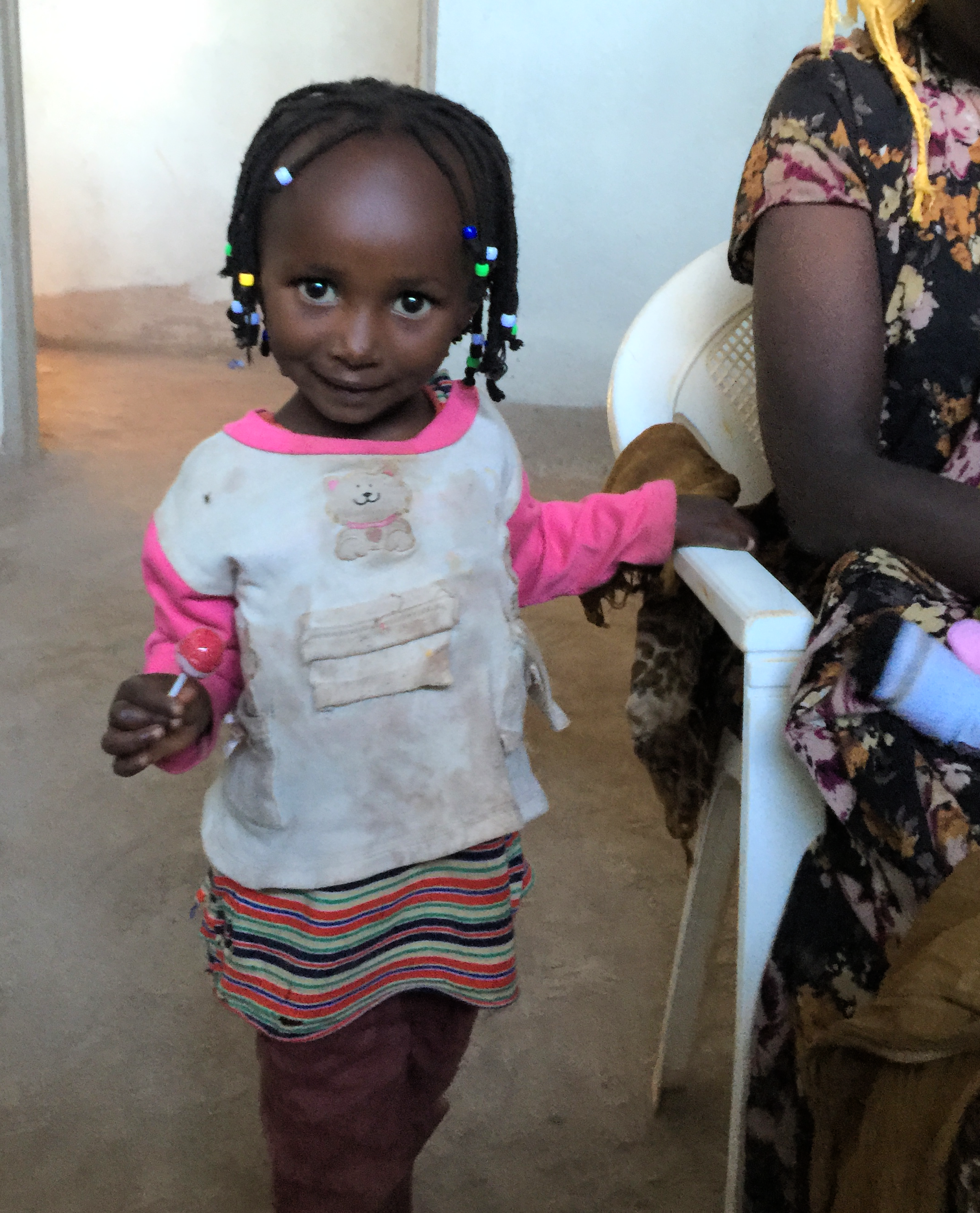This will be our fourth full day at Lewa and today we’re on to our second outreach clinic. Given our past three days, we were all anticipating a busy day. This is an underserved community and outreach is rarely done here. This is in fact Lewa’s first time at this location so we are not sure what to expect.
Wildlife grazing as we make our way to the second outreach at Lewa.
Cecilia, the county nurse who is helping with cervical cancer screening, gave a talk to the community before we begin the outreach. She informs them that it will be like a hospital with many services available and they are allowed to use all of them.
Cecilia (at centre) giving a talk to the community prior to the start of the outreach. She is informing them of who we are and what services will be available to them. You can see Dr. Aw's back in the right foreground.
These community members will have access to:
- Cervical Cancer Screening
And services, support and care in the following areas:
- Optometry
- OB/GYN
- Chronic Disease
- Peadiatrics
- Global infectious diseases including HIV and Malaria
- Nutrition
A meeting of the Medcan Naweza staff to discuss crowd control. There will be over 300 visits today and managing the queues will be a logistical challenge.
The first part of the outreach involves a meeting with everyone to determine how we will manage the crowd. By 9 a.m. there were more than one hundred people in line with more arriving every minute. Each of these people will likely see at least 2 doctors and quite probably more. It will be a logistical challenge, but we are also blown away about how many lives we will help with our pop-up clinic.
Security & Order at the Outreach
Rose, our "bouncer" for the day. She has made a list of names in the order of each patient's arrival in order to manage the anticipated chaos.
We’ve got a tiny Kenyan named Rose who has been designated our "bouncer". Despite her size she is completely in control. Our only issues arise when she occasionally mysteriously disappears and the hall fills with people. It’s a constant battle to manage the crowd. But you can’t blame them. Having medical care, especially western doctors with modern equipment is a rare occurrence and they don’t want to miss the opportunity.
Cervical cancer screenings, Obstetrics and Gynecology
The cervical cancer screening team preparing for the day.
Dr. Sue and the cervical cancer team performed 50 screenings with 1 abnormal result. Luckily we have the cryotherapy unit and can remove the lesion immediately. Faith is working with the county nurse Cecelina who is kind enough to help train the Lewa staff under the supervision of Dr. Sue. We are hopeful that the relationship between Lewa and Cecelina will develop so that Lewa will continue the cervical cancer screening outreaches when we leave. Naweza has agreed to sponsor the cost as long as Lewa supplies the labour. They are quite happy with this deal, as are we.
With the HPV vaccination too expensive at $300 per person, the next best option is to conduct screening on as many people as possible in order to have early detection. The fact that we have the cryo unit and can remove the lesions immediately has the added insurance that the patient will have a positive outcome.
Dr. Michael, Dr. Sue and Dr. James consulting with each other and the Lewa staff to diagnose a patient.
Dr. Sue had an interesting case where a woman presented with extremely swollen legs and feet. It was a fantastic moment where she, Dr. Michael and Dr. Aw consulted with each other alongside the Lewa staff to make a diagnosis of heart failure. This transaction was a great example for the staff to see how consulting with each other is a great resource. It is in fact a sign of strength to know when to seek the advice of others and to use all of the resources that you have available.
Pediatrics
A little patient of Dr. Michael's. What an angelic little face.
Dr. Michael is working with John in the pediatrics station. They have many cases and therefore many learning opportunities. With every case Dr. Michael challenges John with questions on how he would treat the patient. It’s basically using real patients and scenarios to create protocols for diagnosis and treatment out in the field. We have found this to be an enormously effective teaching strategy.
Chronic Disease
A man who is suffering from COPD, a chronic lung disease, which causes a wasting away of the body. Very hard to see.
Dr. James and Geoffrey are busy seeing chronic disease patients. This one particular patient is suspected of having COPD, chronic lung disease. One of the signs of COPD is a wasting away of the body due to the increased metabolism from the chronic inflammation.
Nutrition
Alex had conducted a talk on healthy eating with about 30 people in the community. The group was full of questions from how to reduce uric acid, how much sugar, salt and fat they should eat. Her overall message is to eat less starch and more vegetables and protein. The common food here is either ugali (ground maize made into a paste) or githeri (maize with beans).
She found that the meals are frequently comprised of too much starch, made with either potatoes or rice. As well, the people suffer from acid reflux as they usually eat 1 or 2 large meals and simply eat too much too fast. She is providing education on trying to eat less starch, more vegetables and smaller portions.
Optometry and Vision Care
Dr. Sidiqa is working with Ezekiel to conduct eye examinations. She begins with a vision clinic for the school children. Any child who is suspected of requiring glasses is referred to the clinic where they will be examined with the auto-refractor in order to get an exact prescription. We’ve identified a local supplier who will provide the glasses at affordable prices. Naweza will fund the glasses that are as a result of this outreach.
Outreach Outcomes
Over 350 visits by the patients, fully utilizing all of the services available to them. It’s our last full day at Lewa and we definitely feel like it was the grande finale! The turnout was fantastic and we and the Lewa staff feel like we gave it our all to help this lovely community.
Tomorrow we depart Lewa and head to Fluorspar. It will be a busy day of saying goodbye to the Lewa team, then an hour flight to Fluorspar. We are super excited to see the Fluorspar team again and look forward to a productive week together.
That’s all for now. Thanks for reading!
- Stacy
(P.S. No snake or bat updates, thankfully!)











































